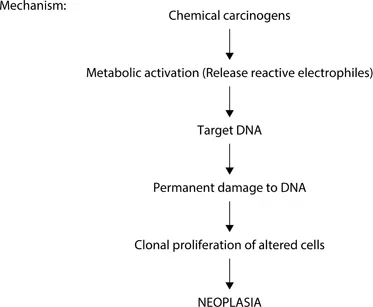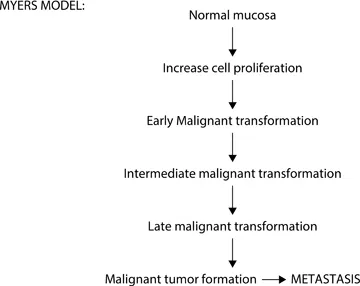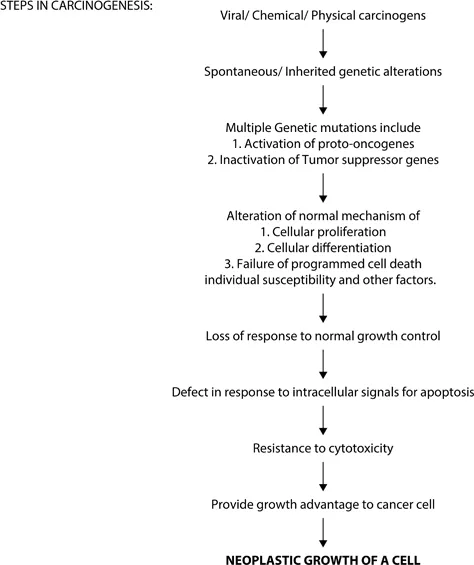
eBook - ePub
Head and Neck Oncology
A Concise Guide
Akheel Mohammad, Ashmi Wadhwania
This is a test
Compartir libro
- 164 páginas
- English
- ePUB (apto para móviles)
- Disponible en iOS y Android
eBook - ePub
Head and Neck Oncology
A Concise Guide
Akheel Mohammad, Ashmi Wadhwania
Detalles del libro
Vista previa del libro
Índice
Citas
Información del libro
This concise handbook has a unique approach and covers all important aspects of head and neck cancers from basic topics like carcinogenesis to advanced treatment options such as immunotherapy, electrochemotherapy, and robotic surgery in a succinct way. As every treatment center manages its patients with a different modality as per their institutional protocol, this book endeavors to standardize the processes by discussing the management of cancers of all anatomic areas in view of the National Comprehensive Cancer Network (NCCN) guidelines, which is the committee that prepares protocols for management of cancers and every head and which neck oncosurgeons must adhere to for their clinical practice.
Key Features
- Explains the topics through flowcharts and diagrammatic representations that are helpful for exam preparation
-
- This book aims to serve as a valuable resource for postgraduate residents of maxillofacial surgery, ENT and otolaryngology, general surgery, plastic surgery, and junior specialists
-
- Serves as a comprehensive, evidence-based quick reference for the clinician on the go
-
Preguntas frecuentes
¿Cómo cancelo mi suscripción?
¿Cómo descargo los libros?
Por el momento, todos nuestros libros ePub adaptables a dispositivos móviles se pueden descargar a través de la aplicación. La mayor parte de nuestros PDF también se puede descargar y ya estamos trabajando para que el resto también sea descargable. Obtén más información aquí.
¿En qué se diferencian los planes de precios?
Ambos planes te permiten acceder por completo a la biblioteca y a todas las funciones de Perlego. Las únicas diferencias son el precio y el período de suscripción: con el plan anual ahorrarás en torno a un 30 % en comparación con 12 meses de un plan mensual.
¿Qué es Perlego?
Somos un servicio de suscripción de libros de texto en línea que te permite acceder a toda una biblioteca en línea por menos de lo que cuesta un libro al mes. Con más de un millón de libros sobre más de 1000 categorías, ¡tenemos todo lo que necesitas! Obtén más información aquí.
¿Perlego ofrece la función de texto a voz?
Busca el símbolo de lectura en voz alta en tu próximo libro para ver si puedes escucharlo. La herramienta de lectura en voz alta lee el texto en voz alta por ti, resaltando el texto a medida que se lee. Puedes pausarla, acelerarla y ralentizarla. Obtén más información aquí.
¿Es Head and Neck Oncology un PDF/ePUB en línea?
Sí, puedes acceder a Head and Neck Oncology de Akheel Mohammad, Ashmi Wadhwania en formato PDF o ePUB, así como a otros libros populares de Médecine y Oto-rhino-laryngologie. Tenemos más de un millón de libros disponibles en nuestro catálogo para que explores.
Información
1 Carcinogenesis
DOI: 10.1201/9780367822019-1
Carcinogenesis is the process of induction of tumor and the agents that induce these tumors are called carcinogens. Carcinogens are broadly classified into
- Chemical carcinogens
- Physical carcinogens
- Hormonal carcinogens
- Biological carcinogens
Chemical Carcinogens
The first report of any chemical-causing neoplasia came from the observation in 1775 that there was a higher incidence of scrotum cancer in chimney sweepers in London than in the general population (Flowcharts 1.1 and 1.2).

Flowchart 1.1 Initiation of carcinogenesis.

Flowchart 1.2 Mechanism of carcinogenesis.
A single dose of an initiating agent for a large duration is more effective than a short dose with frequent exposure:
- Direct-acting carcinogens: Alkylating agents/acylating agents
- Indirect-acting carcinogens: Polycyclic aromatic hydrocarbons (tobacco)/azodyes
Physical Carcinogenesis
Physical causes are divided into
- Radiation agents: UV light, ionizing radiation
- Non-radiation agents
UV light: The main source of UV radiation is sunlight. It usually penetrates the skin for a few millimeters so that its effect is limited to epidermis. Excessive exposure can cause various forms of skin cancers, such as basal cell carcinoma, keratoacanthoma, and malignant melanoma.
Ionizing radiation: This includes all kinds such as X-rays, radioactive isotopes, protons, and neutrons. The most frequent radiation-induced cancers are leukemia, thyroid cancers, skin cancers, and salivary gland tumors.
Hormonal Carcinogenesis
Cancer is more often seen to develop in organs that undergo proliferation under the influence of excessive stimulation of hormones. Hormone-sensitive tissues that develop tumors are the breast, endometrium, vagina, prostate, and testis.
Biological Carcinogenesis
Biological carcinogenesis has been studied that about 20% of all cancers worldwide are viral-associated cancers. Sanarelli, an Italian physician, in 1889 was the first person who observed the association of oncogenic viruses with the neoplasia.
Examples include DNA oncovirus: Human papillomavirus/Epstein-Barr virus/cytomegalovirus/herpes simplex virus. RNA oncovirus: Human T-cell lymphotropic virus (HTLV).
Theories of Carcinogenesis
Important information:
- Proto-oncogenes: These are normal genes that bring about cellular differentiation and growth. They can be converted into oncogenes.
- Oncogenes: These are genes associated with neoplastic transformation.
- Anti-oncogenes: These are cells that normally suppress cell proliferation. They are also called tumor suppressor genes.
Cancer may arise not only by activation of proto-oncogenes into oncogenes but also by suppressor of anti-oncogenes.
The following sections discuss the theories of carcinogenesis.
Genetic Theory
Genetic theory is the most popular and accepted theory. This theory suggests that the cells become neoplastic due to alterations in the DNA. The mutated cell transmits its character to the next progeny.
Epigenetic Theory
According to epigenetic theory, carcinogenic agents act on the activators or suppressors of genes and not on the gene themselves, which results in the abnormal expression of genes.
Multistep Theory
Carcinogenesis is a multistep process. This is substantiated by in vitro changes in the experimental animals as well as in vivo changes in human cancers.
For example, in chemical carcinogenesis, two essential features occur in proper sequence—initiation and promotion.
Most cancers arise after several mutations, which have been acquired in proper sequential manner.
Immune Surveillance Theory
An immune-competent host often mounts an attack on developing tumor cells to destroy them, while an immune incompetent host fails to destroy them. Some evidence in support of this theory is the fact that there is a high incidence of cancer in AIDS patients and most cancers occur in old people, where the host immune response is weak.
Monoclonal Theory
This theory suggests that cancers arise from a single clone of transformed cells.
Tumor Heterogeneity
This theory by Fidler and Ellis1 states that a tumor is composed of subpopulations heterogeneous of cells. They will differ with respect to their immunogenicity, invasiveness, and sensitivity to cytotoxic drugs. But the environment of local tumor cells may favor the expansion of more aggressive clone information of metastasis (Flowcharts 1.3 and 1.4).

Flowchart 1.3 Myers model.

Flowchart 1.4 Steps in carcinogenesis.
Field Cancerization
Secondary tumors of the oral cavity have a sobering effect on the prognosis for head and neck cancer (HNC) patients. These tumors are most often seen to develop in the oral cavity but can also be seen in lungs or esophagus from which 10–40% of patients with HNC are often fatal. One of the reasons for this multifocal tumor origin was proposed around 40 years ago by Slaughter et al. In accordance with his concept of field cancerization, there are multiple cell groups that independently undergo neoplastic transformation due to stress of regional carcinogenic activity. There are certain molecular genetic approaches that have been recently challenged with the fact that independent transforming events are more common in the epithelial mucosa of HNC patients. Often, when a primary cancer is compared with a secondary tumor somewhere in oral cavity/upper aerodigestive tract, these paired tumors often harbor cells that have identical patterns of genetic alterations or mutations. It is assumed that single cell regimens a critical genetic for advantage of growth over its neighboring cells. At some point of time after the transformation, cells which harbor these early genetic alterations then migrate to nearby adjacent areas to populate contiguous tracts of mucosa further accumulating other alterations that later acquire additional growth advantages from the surrounding environment, and ultimately transform into aggressive subclones that may be separated by space and time.
Secondly, collective observations have supported the view that the epithelial mucosa of the upper aerodigestive tract may become populated by these genetically damaged clones of cells, which may lack any histopathological evidence of dysplastic features. The presence of these genetically damaged but morphologically intact cells not only explains the phenomenon of fi...